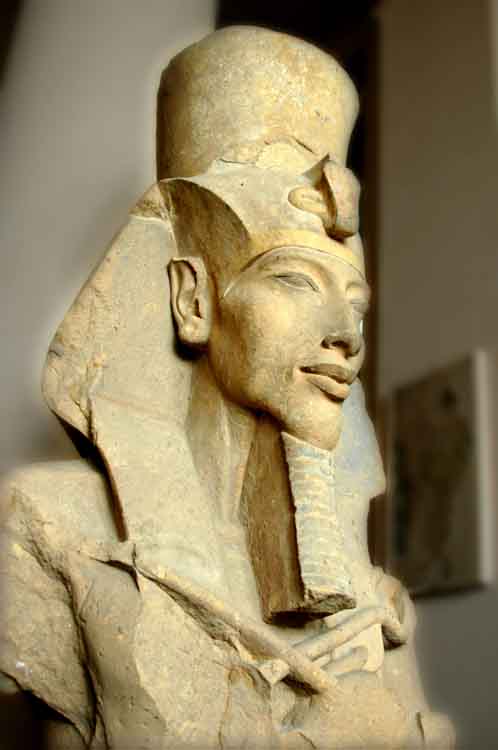 Tutankhamun, or King Tut, is most likely the most famous Egyptian ruler. His name is renown beyond Egypt, and he even has his own exhibit. It is believed that Tutankhamun ruled Egypt between 1334 and 1325 BC. He was probably the 12th ruler of Egypt's 18th Dynasty.
Tutankhamun, or King Tut, is most likely the most famous Egyptian ruler. His name is renown beyond Egypt, and he even has his own exhibit. It is believed that Tutankhamun ruled Egypt between 1334 and 1325 BC. He was probably the 12th ruler of Egypt's 18th Dynasty.Tutankahmun (Tut) was not given that name at birth. His father, Akhenaten, named him Tutankhaten, after himself and the god of the sun disk. Tut changed his name in the second year of his name to Tutankhamen to show reverance to Amun, his main god. Another thing that his father did that he changed was the introduction of monotheism. He did not believe in this as his father did.
He was only a young boy, so his reign was taken over by advisors. Older, wiser officials told him what to do and led him in the right direction. He restored all the temples his father destroyed. And was the keeper of peace.
At age 18, he was murdered. Many people believe that this is what happened because his skull
 was smashed and only one person was close enough to hurt him. His reign was not exactly significant, he is most famous for his tomb and artifacts which were virtually intact. Most tombs fell to grave robbers. His tomb was found by an archaelogoist named Howard Carter in 1922. His grave was located in the Valley of Kings.
was smashed and only one person was close enough to hurt him. His reign was not exactly significant, he is most famous for his tomb and artifacts which were virtually intact. Most tombs fell to grave robbers. His tomb was found by an archaelogoist named Howard Carter in 1922. His grave was located in the Valley of Kings.King Tutankhamen has a rather famous name. A museum exhibit, numerous websites and extra special care for his artifacts are just a few tributes to this great king. His reign will be renown for years to come.





